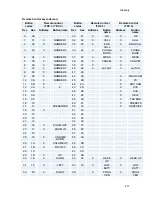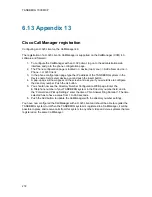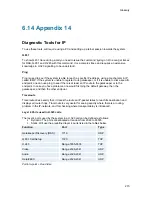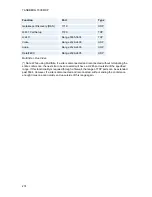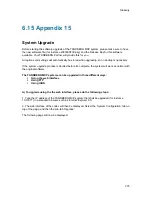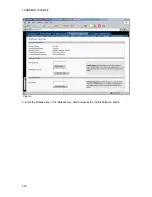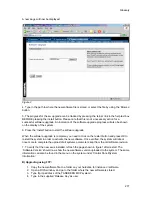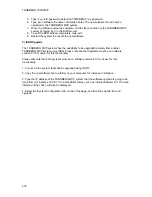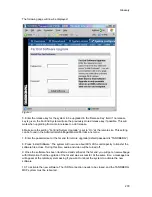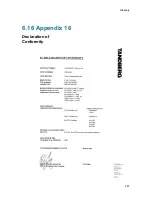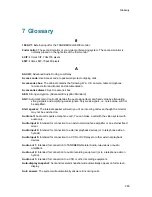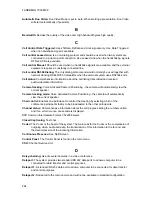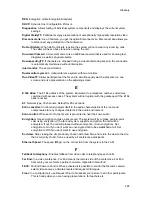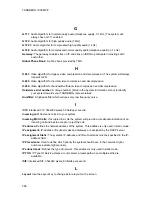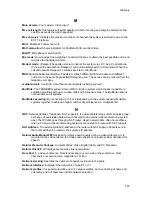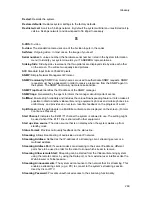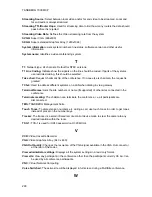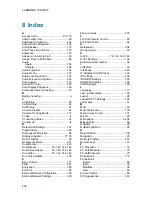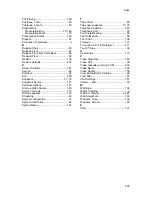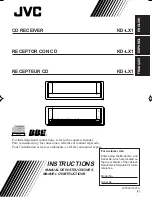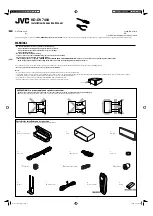
Glossary
285
DES:
Encryption. (Data Encryption Standard)
DHCP:
Dynamic Host Configuration Protocol.
Diagnostics:
Allows testing of individual system components and displays the current system
settings.
Digital ClarityTF:
Participants enjoy presentations of exceptionally high quality resolution video.
Disconnect site:
As a Chairman, you get the option Disconnect site. Disconnect site allows you
to disconnect any participant in the conference.
Do Not Disturb:
When Do Not Disturb is active the system will not accept any incoming calls.
The caller will hear a busy tone when calling the unit.
Document Camera:
A document camera is an additional camera that is used for showing text,
diagrams as well as physical objects.
DownspeedingTF:
If channels are dropped during a videoconferencing session, the connection
is automatically maintained without interruption.
dual monitor:
The second monitor
Dual monitor system:
A videoconference system with two monitors.
Duo VideoTF:
Allows participants at the far end to simultaneously watch a presenter on one
screen and a live presentation on the adjoining screen.
E
E.164 Alias:
The E.164 address of the system. Equivalent to a telephone number, sometimes
combined with access codes. The system will not register with the gatekeeper if the E164
alias is not set.
E1:
Network type, 30 channels. Default for PAL versions.
Echo canceller:
Continuously adjusts itself to the audio characteristics of the room and
compensates for any changes it detects in the audio environment.
Echo control:
When set to On the far end is prevented to hear their own audio.
Encryption:
Use encryption to make a secure call. The system will try to make point-to-point
calls using encryption. If the far end system supports encryption, the call will be
encrypted. If not, the call will proceed without encryption. (Auto encryption). Set
encryption to On if you don't want an unencrypted call to be established at all. Set
encryption to Off if you don't want to use encryption.
End view:
Stop viewing the site previously chosen with View Site, and return the view to the site
that is currently On Air. Can be used by all conference participants.
Ethernet Speed:
The speed (Mbps) on the connection from the system to the LAN.
F
Fallback to telephony:
Enables fallback from video calls to telephony/speech calls.
Far End:
In a video conference, Far End means the remote side of the conference. Far End
Camera is your conference partner's camera. Opposite to Near End
FECC:
Far End Camera Control. When activated it is possible to control the far end's camera,
select video sources, activate presets and request still images.
Floor:
In a multipoint call, use Request Floor to broadcast your picture to all other participants.
This is handy when you are having presentations, for teachers etc.
Summary of Contents for 700 MXP
Page 14: ......
Page 27: ...Installation 13 Figure 6 Figure 7 ...
Page 55: ...General Use 41 ...
Page 140: ...TANDBERG 7000 MXP 126 PC Presentation shown in Wide stretched mode ...
Page 196: ...TANDBERG 7000 MXP 182 Voice Switched mode ...
Page 249: ...Peripheral Equipment 235 ...
Page 255: ...Peripheral Equipment 241 ...
Page 283: ...Glossary 269 Dimensions Front view Side view Rear view Underside view ...
Page 295: ...Glossary 281 6 16 Appendix 16 Declaration of Conformity ...
Page 296: ...TANDBERG 7000 MXP 282 6 17 Appendix 17 Dimensions ...

